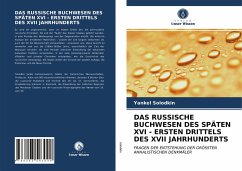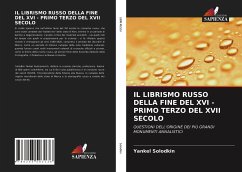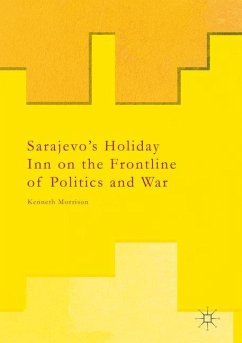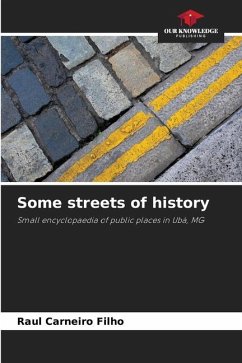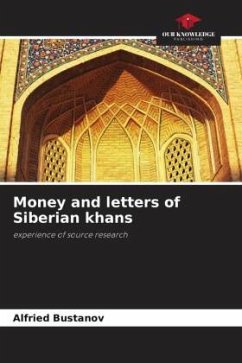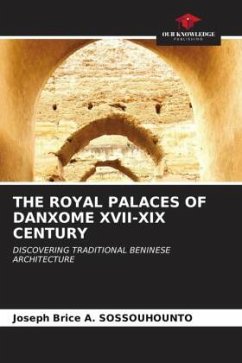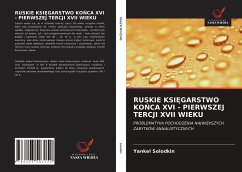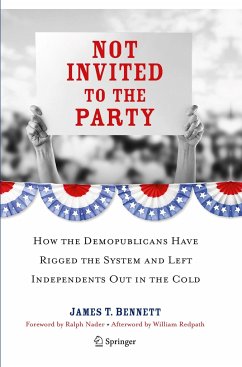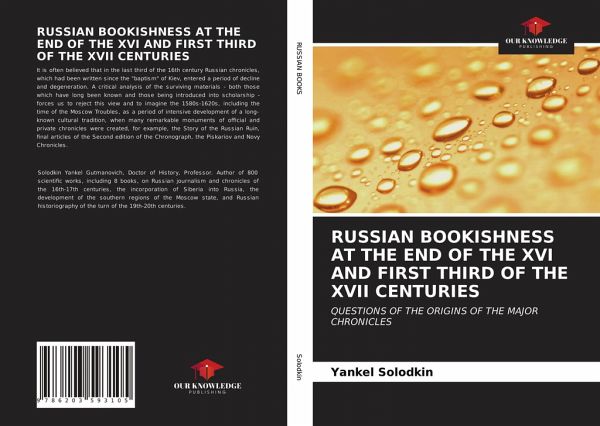
RUSSIAN BOOKISHNESS AT THE END OF THE XVI AND FIRST THIRD OF THE XVII CENTURIES
QUESTIONS OF THE ORIGINS OF THE MAJOR CHRONICLES
Versandkostenfrei!
Versandfertig in 6-10 Tagen
52,99 €
inkl. MwSt.

PAYBACK Punkte
26 °P sammeln!
It is often believed that in the last third of the 16th century Russian chronicles, which had been written since the "baptism" of Kiev, entered a period of decline and degeneration. A critical analysis of the surviving materials - both those which have long been known and those being introduced into scholarship - forces us to reject this view and to imagine the 1580s-1620s, including the time of the Moscow Troubles, as a period of intensive development of a long-known cultural tradition, when many remarkable monuments of official and private chronicles were created, for example, the Story of t...
It is often believed that in the last third of the 16th century Russian chronicles, which had been written since the "baptism" of Kiev, entered a period of decline and degeneration. A critical analysis of the surviving materials - both those which have long been known and those being introduced into scholarship - forces us to reject this view and to imagine the 1580s-1620s, including the time of the Moscow Troubles, as a period of intensive development of a long-known cultural tradition, when many remarkable monuments of official and private chronicles were created, for example, the Story of the Russian Ruin, final articles of the Second edition of the Chronograph, the Piskariov and Novy Chronicles.



